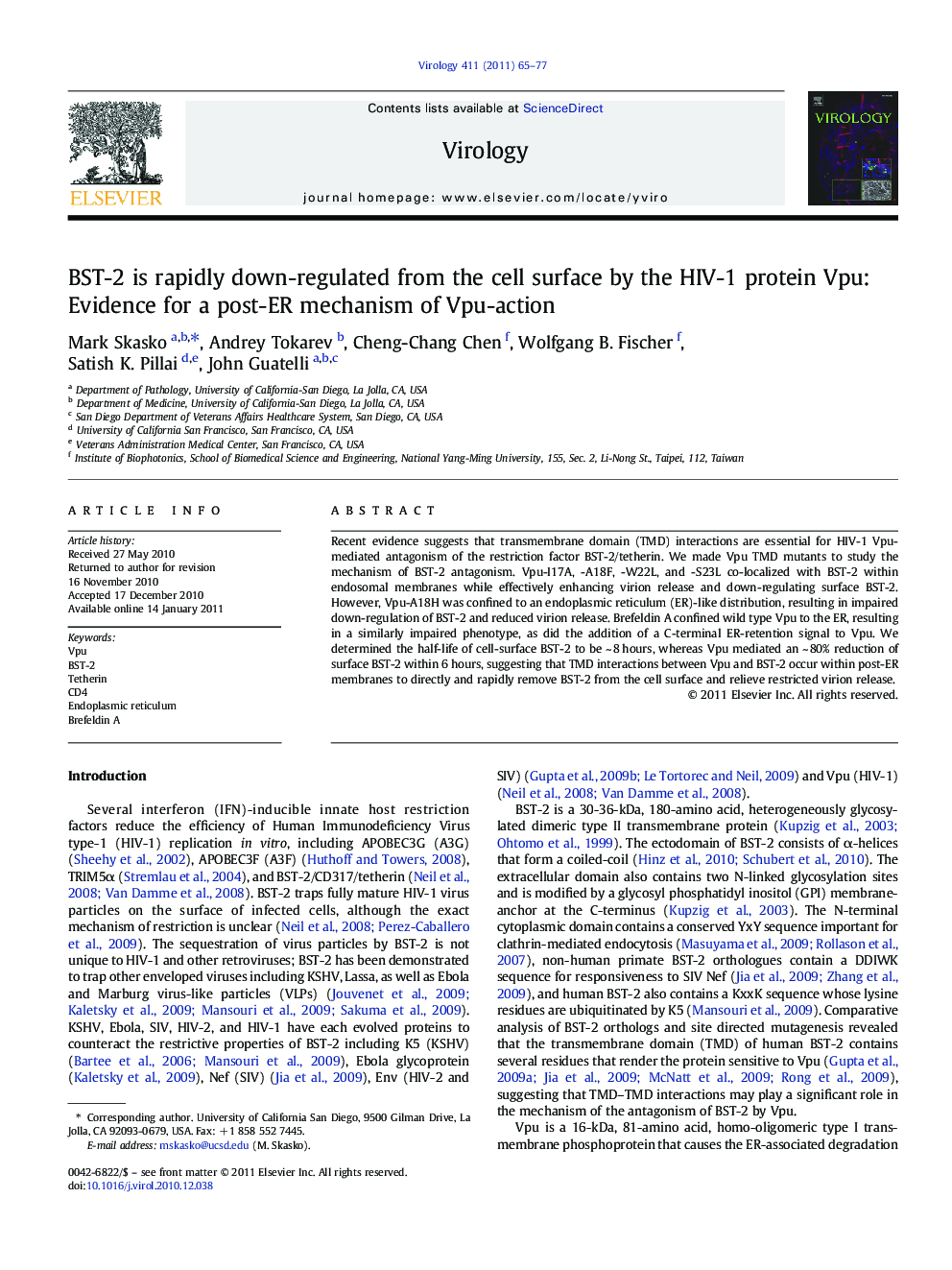| Article ID | Journal | Published Year | Pages | File Type |
|---|---|---|---|---|
| 6141672 | Virology | 2011 | 13 Pages |
Abstract
Recent evidence suggests that transmembrane domain (TMD) interactions are essential for HIV-1 Vpu-mediated antagonism of the restriction factor BST-2/tetherin. We made Vpu TMD mutants to study the mechanism of BST-2 antagonism. Vpu-I17A, -A18F, -W22L, and -S23L co-localized with BST-2 within endosomal membranes while effectively enhancing virion release and down-regulating surface BST-2. However, Vpu-A18H was confined to an endoplasmic reticulum (ER)-like distribution, resulting in impaired down-regulation of BST-2 and reduced virion release. Brefeldin A confined wild type Vpu to the ER, resulting in a similarly impaired phenotype, as did the addition of a C-terminal ER-retention signal to Vpu. We determined the half-life of cell-surface BST-2 to be ~Â 8Â hours, whereas Vpu mediated an ~Â 80% reduction of surface BST-2 within 6Â hours, suggesting that TMD interactions between Vpu and BST-2 occur within post-ER membranes to directly and rapidly remove BST-2 from the cell surface and relieve restricted virion release.
Related Topics
Life Sciences
Immunology and Microbiology
Virology
Authors
Mark Skasko, Andrey Tokarev, Cheng-Chang Chen, Wolfgang B. Fischer, Satish K. Pillai, John Guatelli,
